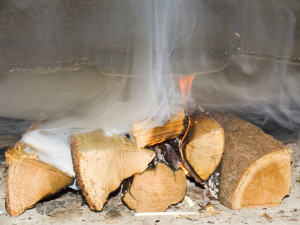Chimney Care Checklist for Spring

Your chimney should be a priority in your home maintenance checklist this Spring. Do this every year and you’ll have a longer lasting, efficient, and healthy chimney system.
We know how it goes: The weather starts to warm up, and your fireplace and chimney system heads out of your mind. It’s understandable to close your flue for the season and not want to think about your chimney until next fall. But making chimney care and maintenance part of your spring home checklist can make your life easier, and your chimney system perform better.
Here are a few spring chimney checklist suggestions we have at Chief Chimney Services, with a little bit of “why” behind them.
Schedule Your Chimney Sweeping Appointment In The Spring
Every chimney system is different, but one thing we can tell you for sure: If you’ve been using your wood-burning fireplace or stove all fall and winter, your flue has creosote built up on its walls. As you burn wood, heated byproducts rise up to vent through your chimney, and your cooler chimney walls turn some of those gases back into liquid. That liquid layers and layers, and there you have it: creosote.
Ideally, you should have creosote removed during a chimney sweeping appointment before you start using the system over the next heating season. But here’s one reason why we think it’s preferable and better to make that appointment this spring: Your home will smell better all summer. That creosote has a smoky, sooty odor, and the heat and humidity of the summer brings that odor out. If you’ve ever noticed an acrid smell in your home during the summer — even though you haven’t used your fireplace in months — creosote is the source. Having your chimney swept in the spring means nicer-smelling air in the summer.
Schedule Your Annual Chimney Inspection In The Spring Too
To properly maintain your chimney system, an annual chimney inspection is a must. And again, you’ll want to make sure it’s done before you start using your heating appliance when the weather cools again. But there are definite benefits to getting this work done early, in the spring.
First, you’ll catch Chief Chimney Services before our busiest season, which means you’ll have broader options for appointments. But also, when that first cool night comes around, you won’t have anything to think about — your system will already be ready for warm, cozy fires.
Prepare Your System For Spring Rains
A lot of the chimney repairs we do at Chief Chimney are to the parts of your system that are designed to keep moisture out. Water is your chimney’s worst enemy, and we’ll do anything and everything we can to keep it from making its way in.
Moisture and your chimney’s relationship with it is something well worth thinking about in the spring, before the heavy rainy season rolls in. If a small problem in your chimney crown or chimney flashing has developed over the winter, spring rains can lead to chimney leaks and water damage to the interior of your home. Chief Chimney Services technicians can find those issues during a spring chimney inspection, and make any repairs necessary to arm the system against moisture intrusion again.
We can also recommend and apply a specially formulated waterproofing sealant for your masonry chimney that will significantly boost its ability to protect against water. Waterproofing keeps moisture from permeating the masonry itself, which not only keeps water out in the short term, but can protect your bricks and mortar joints in the long term.
If you have any questions about chimney maintenance and care — including making that part of your spring routine — Chief Chimney Services is always here to help. Give us a call!




